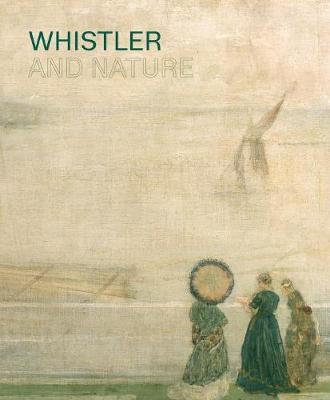Whistler and Nature

Whistler and Nature
where he attempted to realise his father's hopes that he would make engineering or architecture his profession. These infl uences in turn shaped Whistler's attitude towards nature, as expressed in works ranging from his celebrated London `Nocturnes' to his French coastal scenes - all of which were created after Whistler moved permanently to Europe in 1855.
Whistler's close observation of nature and its moods underpinned his powerful and haunting visions of nineteenth-century life. His images explore the contrasts between the natural and man-made worlds: rivers and wharves, gardens and courtyards, the ideal and the naturalistic. And his singular vison was always defi ned by his enduring affi nity with the makers of railways, bridges and ships, the cornerstones of Victorian wealth and trade. Infl uenced by Rembrandt, Whistler's early etchings of London are notable for their focus on line and topographical accuracy. From the 1860s, his enthusiasm for Japanese art, too, infl uenced his attitude to perspective and spatial relations between objects. This led him, in his London Nocturnes, to reduce the external world before him to its bare bones. Whistler's smoky images of warehouses, bridges, harbours and tall ships were designed to showcase a new kind of productive, wealth-generating landscape. It is a view of nature constrained by man-made structures: the shadowy outline of the warehouses and chimneys on the far shore; the mast and rigging of a Thames barge in the middle distance.
This absorbing book reassesses a familiar and notoriously colourful artistic fi gure in a fascinating and pertinent new light, and is an important new contribution to our understanding of the Victorian art world and its physical context.
PRP: 136.00 Lei
Acesta este Pretul Recomandat de Producator. Pretul de vanzare al produsului este afisat mai jos.
122.40Lei
122.40Lei
136.00 LeiIndisponibil
Descrierea produsului
where he attempted to realise his father's hopes that he would make engineering or architecture his profession. These infl uences in turn shaped Whistler's attitude towards nature, as expressed in works ranging from his celebrated London `Nocturnes' to his French coastal scenes - all of which were created after Whistler moved permanently to Europe in 1855.
Whistler's close observation of nature and its moods underpinned his powerful and haunting visions of nineteenth-century life. His images explore the contrasts between the natural and man-made worlds: rivers and wharves, gardens and courtyards, the ideal and the naturalistic. And his singular vison was always defi ned by his enduring affi nity with the makers of railways, bridges and ships, the cornerstones of Victorian wealth and trade. Infl uenced by Rembrandt, Whistler's early etchings of London are notable for their focus on line and topographical accuracy. From the 1860s, his enthusiasm for Japanese art, too, infl uenced his attitude to perspective and spatial relations between objects. This led him, in his London Nocturnes, to reduce the external world before him to its bare bones. Whistler's smoky images of warehouses, bridges, harbours and tall ships were designed to showcase a new kind of productive, wealth-generating landscape. It is a view of nature constrained by man-made structures: the shadowy outline of the warehouses and chimneys on the far shore; the mast and rigging of a Thames barge in the middle distance.
This absorbing book reassesses a familiar and notoriously colourful artistic fi gure in a fascinating and pertinent new light, and is an important new contribution to our understanding of the Victorian art world and its physical context.
Detaliile produsului








